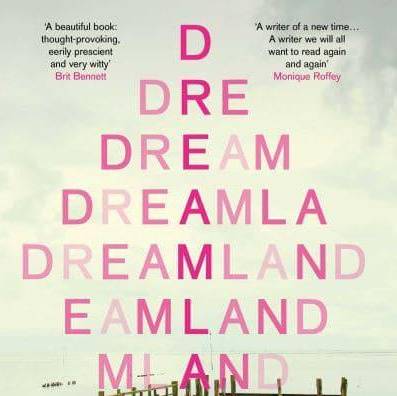
This article is a preview from the Autumn 2019 edition of New Humanist
Good and Mad: The Revolutionary Power of Women’s Anger (Simon & Schuster) by Rebecca Traister
“Angry” and “Feminist” used to go hand-in-hand as a pejorative. Nobody wanted to be an angry feminist; anger was not feminine, but it also was not progressive. Anger was destructive and violent and fundamentally problematic.
Of course, masculinity is more usually associated with anger, and patriarchy is rooted in – among other things – the violent threat of male anger. Female anger is less normalised. Angry men might be scary, but angry women are hysterical, ridiculous, irrational. Yet anger in the face of injustice is not only a legitimate response, but a coherent one. The assumption that anger is always unreasonable, and that female anger in particular is both unnatural and irrational, gets to the root of the idea of the angry feminist: these harpies are not only unfeminine but ridiculous.
Now, though, women are angry in public. Rebecca Traister’s book, Good and Mad: The Revolutionary Power of Women’s Anger, tries to historicise this shift. Traister, an American author, had intended to write her book slowly, but was swept along by the force of her own anger during the Trump campaign, driven to “capture this rebellion before its sharp, spiky contours got retroactively smoothed and flattened”. Women around the world might sympathise. I was moved to angry tears watching Christine Blasey Ford testify during Brett Kavanaugh’s nomination to the US Supreme Court in September 2018; Traister’s book came out a month later. It certainly feels timely, if – inevitably – a little rushed in places.
The book tries to understand American women’s rage and how it has been historically “suppressed, discouraged, discounted”. Traister simultaneously tells two stories. One is the tale of how Trump became president, and the responses to this. There is material on the campaign and the press treatment of Hillary Clinton; the Women’s March; and resistance to Trump from female Democrat senators and Congressional Representatives, and other politicians such as the Mayor of San Juan (Puerto Rico), Carmen Yulín Cruz. When Trump called her “nasty” following her criticism of the US response to Hurricane Maria, she responded: “I don’t give a shit. I am done being polite, I am done being politically correct, I am mad as hell.”
The book also takes in other critical contemporary moments which have foregrounded female rage: Beyoncé’s Lemonade album, which celebrated the “punitive and righteous” anger of a woman wronged; Emma González’s coherent and furious response to the Parkland school shooting, at which 17 of her fellow students and teachers were murdered; the international outpouring of female fury in response to the Weinstein allegations and the #MeToo movement. This contemporary media commentary is interesting, especially the exploration of how Clinton’s campaign was defined by a national press deeply uncomfortable with a female candidate, and how accusations of her anger landed so easily among an electorate primed to see female ambition as pathological. The material on Congressperson Maxine Waters, a black Democrat woman, is also thought-provoking, especially the work detailing how her “anger” at Trump’s family separation policy was critiqued both by her political opponents but also by members of her own party, who called for her to be “civil”. Traister argues that this “goddamn travesty” illuminates the dual burden carried by women of colour, and shows persuasively how the trope of the “Angry Black Woman” reflects women of colour’s powerlessness within the system even when this label is supposedly celebratory.
The book explores whose anger is validated and whose is ignored, with a section entitled “What’s the Matter With White Women?” outlining how some women enjoy a degree of power through their closeness to white patriarchy in America and how their anger can be valued as productive or reasonable. This approach could have been pushed further. There could also have been more discussion of angry women who do not fit into a liberal, “progressive” space at all. The book points out that many, many white women in America voted for Trump. What about their anger? Should we work to reclaim that, too? If we understand that white patriarchy co-opts women systemically, what do we do with their fury in the service of this system?
The second narrative running through the book draws on historic examples to create a context for this female rage. The book begins with a description of Florence Kennedy at the 1972 Democratic National Convention, screaming “Don’t touch me, you motherfucker” as men try to pacify her. There is material on Carrie Nation, the temperance campaigner who smashed up bars with a hatchet; Mary Harris Jones, the labour organiser who rejected female suffrage because “you don’t need the vote to raise hell”; Susan B. Anthony, who rejected marriage and children to campaign for women’s right to vote; Mamie Till, whose son Emmett was violently murdered at 14 by white supremacists, and who chose to bury him in an open casket to force the press to publish pictures of his disfigured body.
This is a litany of women who have been wronged, and a catalogue of ways in which women’s rage has been delegitimised, even when it has also been personally useful or politically effective. These historical examples are often framed as a form of useful knowledge for contemporary women. This is unhelpful, both because it decontextualises the history behind their stories, and because practically it is unclear how, for example, the religious inspiration behind Carrie Nation’s smashing of saloons might be repurposed for 21st-century activists. The historic examples are where the rapid production of the book can be most easily perceived: this material is often frustratingly scant in its reach and detail. A book that explores how female anger has been articulated and received, how that changes over time and culture, and what that means for women in the present day would be interesting. But this is not that book, and it does not need to try to be.
Traister was, at the beginning of her writing process, ambivalent about her relationship to female anger. Could it harm women as much as help them? By the end of the book, her attitude changed: “I am now suspicious of nearly every attempt to code anger as unhealthy.” But reading this book and living in this political moment have made me cautious. We must think about what anger does to us, whom we ask to be angry, and how we treat that anger in society. We should also ask ourselves how we can move beyond anger, and what that world would look like.

